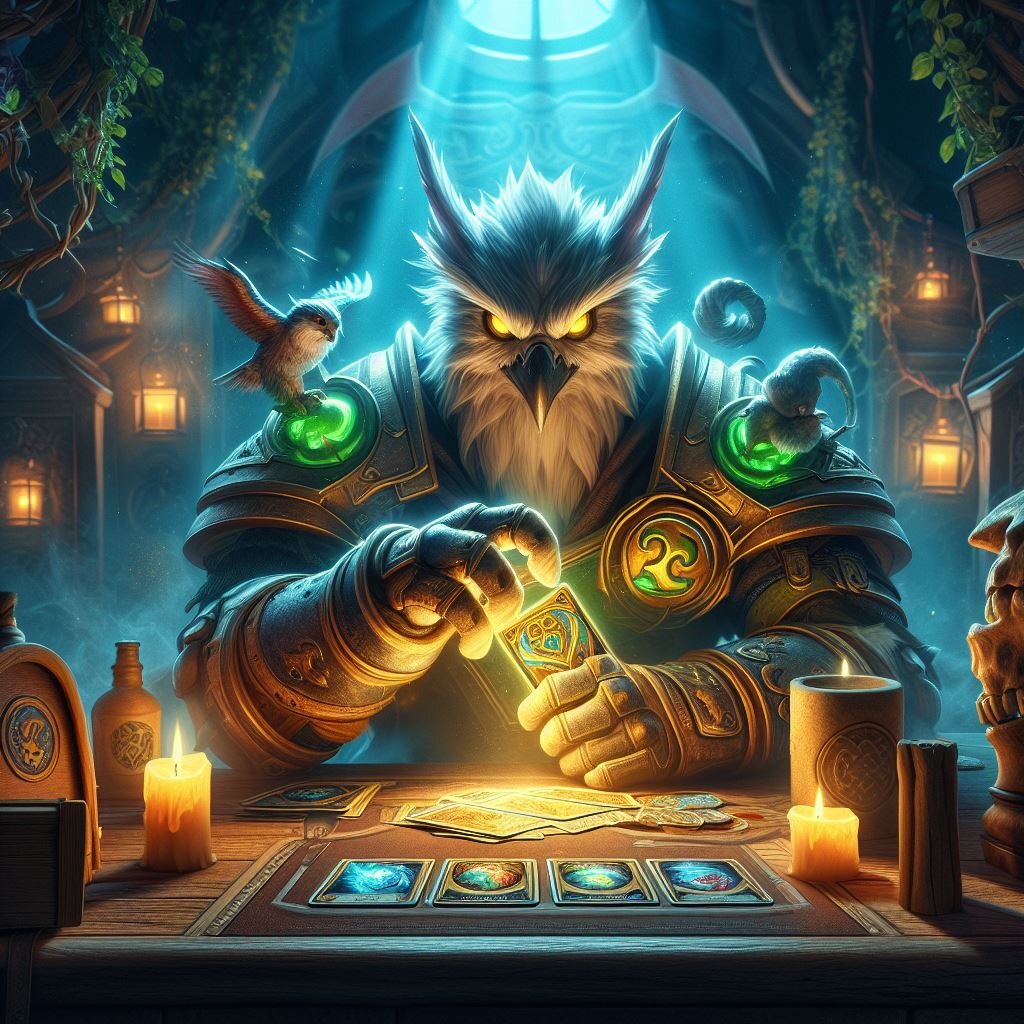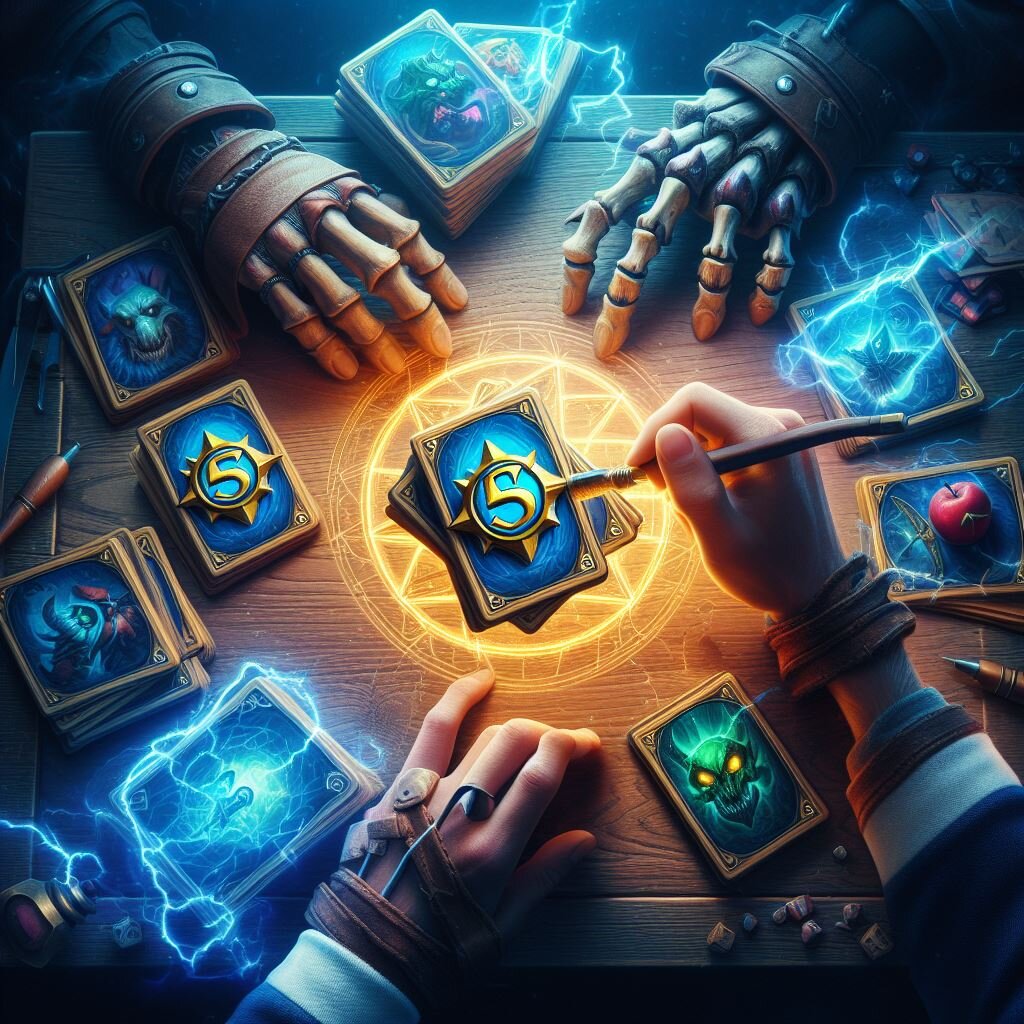Hearthstone Esports Arena: Masterfully Carving a Dominant Niche for Card Games
tollashi.net – In the ever-evolving landscape of Esports Arena, Hearthstone has emerged as a powerhouse, redefining the reach and potential impact of digital card games. Developed by Blizzard Entertainment, Hearthstone combines strategic depth with accessible gameplay, making it both a captivating pastime and a competitive esports title. This article explores how Hearthstone has carved a unique niche for card games in the esports industry, highlighting its growth, the community it has nurtured, and its influence on the esports world.
Strategic Gameplay Meets Accessible Design:
Hearthstone’s success can largely be attributed to its finely balanced blend of deep strategic gameplay and user-friendly mechanics. Players select cards from a personal deck, crafted from a pool of hundreds of available cards, to duel against opponents. The game’s rules are straightforward but allow for complex strategies, appealing to both novice players and seasoned strategists.
Competitive Esports Arena Structure and Tournaments:
Hearthstone’s Esports Arena scene is robust, with a well-structured competitive system that culminates in the Hearthstone World Championship. The journey to the championship involves several tiers:
- Online Qualifiers and Ranked Play: Players begin their competitive journey in online qualifiers and through the game’s ranked play system, where they compete to earn points to qualify for major tournaments.
- Masters Tours and Grandmasters: Blizzard hosts several large-scale tournaments called Masters Tours throughout the year, where players compete for substantial prize pools. The highest tier of competition, the Grandmasters, features top players from around the world competing in seasonal play, leading to the annual World Championship.
Community and Viewer Engagement:
Hearthstone’s Esports Arena community is a cornerstone of its success. Blizzard has fostered a vibrant community through:
- Interactive Streams: Many players and fans engage with Hearthstone through live streams. Streamers not only play the game but also discuss card strategies, meta-game developments, and tournament predictions, helping to educate and entertain their audiences.
- Fan Participation: Hearthstone tournaments often feature interactive elements, such as allowing viewers to vote on certain aspects of the game or participate in predictions for match outcomes.


Innovations and Game Updates:
To keep the game fresh and engaging, Esports Arena receives regular updates and expansions. Each expansion introduces new cards and mechanics, which can shift the game’s meta:
- Expansions and Adventures: Typically released three times a year, expansions add new cards and sometimes new game mechanics. Adventures offer a narrative experience where players can earn new cards by completing challenges.
- Balancing and Patches: Hearthstone’s development team actively balances the cards through patches to ensure competitive integrity and keep the gameplay exciting.
Challenges and Adaptations:
Despite its success, Hearthstone faces challenges typical of digital card games in esports:
- Balance Between Luck and Skill: As with any card game, balancing the influence of luck (RNG) with skill is critical to maintaining a competitive environment. Blizzard addresses this through careful card design and frequent adjustments.
- Keeping the Meta Diverse: Ensuring that no single strategy dominates the game is crucial for maintaining player interest and competitive fairness. Regular updates help keep the meta-game dynamic.
Conclusion:
Hearthstone Esports Arena has successfully carved a niche for card games within the esports arena by blending strategic depth with accessible gameplay, fostering a strong community, and maintaining a dynamic competitive environment. As Hearthstone continues to evolve with new content and innovations, it remains a leading example of how card games can thrive as esports, offering both entertainment and strategic challenge to players around the world. Whether you are a competitive player or a casual fan, Hearthstone Esports Arena offers an engaging and enriching experience that showcases the potential of card games in the digital age.
FAQs
1. What makes Hearthstone stand out in the esports industry?
Hearthstone distinguishes itself in the Esports Arena industry with its unique blend of strategic depth and accessible gameplay. The game is based on the rich lore of the Warcraft universe, which adds a familiar narrative for fans. Its format of short, engaging matches makes it both viewer-friendly and suitable for competitive play, bridging the gap between casual mobile gaming and serious esports competitions.
2. How has Hearthstone influenced the popularity of card games in esports?
Hearthstone has significantly influenced the popularity of card games in esports by demonstrating that card games can offer the same level of excitement and competitive play as other game genres. Its success has led to the development of other card-based esports games, expanding the genre and attracting diverse gaming audiences who appreciate the combination of tactical play and lower entry barriers compared to more mechanically intensive games.
3. What are the key components of competitive Hearthstone?
Competitive Hearthstone features several key components:
Deck Building: Players must strategically assemble decks from their card collections, considering synergies and counterplays.
Tournaments: Hearthstone’s Esports Arena scene includes various tournament formats, from local cups to international championships, often featuring large prize pools and extensive coverage.
Live Streaming: Matches are frequently streamed on platforms like Twitch, allowing fans to watch live, interact with streamers, and learn from top players.
4. How does Blizzard support Hearthstone as an esport?
Blizzard supports Hearthstone esports through structured competitive circuits, such as the Hearthstone Grandmasters and the annual Hearthstone World Championship. These events are supported by comprehensive broadcasting, prize money, and promotional activities. Blizzard also regularly updates the game with new expansions, cards, and balance changes to keep the meta-game dynamic and engaging for both players and viewers.
5. What challenges does Hearthstone face in the esports realm, and how are they addressed?
Hearthstone faces several challenges in the esports realm, including ensuring game balance and managing the randomness inherent in card games, which can impact competitive integrity. Blizzard addresses these challenges by:
Frequent Updates: Regular patches and updates help adjust balance issues and introduce new content to keep the game fresh.
Player and Community Feedback: Blizzard actively engages with the community to gather feedback which is often instrumental in shaping game updates and tournament structures.
Innovative Formats: Experimenting with different tournament formats to mitigate the impact of luck and emphasize player skill.
